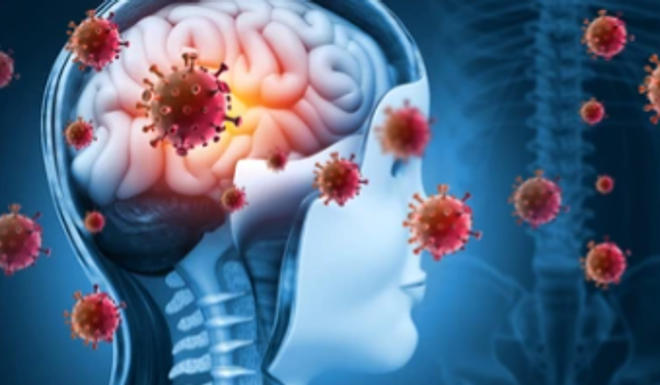Published 20:23 IST, July 21st 2024
Viral Encephalitis: Early Signs, Symptoms And Treatment Options
Viral encephalitis is a serious and potentially life-threatening condition characterised by the inflammation of the brain due to viral infection.

There are 33 suspected cases of viral encephalitis in Gujarat of which 30 are Gujarat residents and three from out of state who are admitted in hospitals in the state, Gujarat's CM Bhupendra Patel said in an official release.
"Viral encephalitis is a serious and potentially life-threatening condition characterized by the inflammation of the brain due to viral infection. It affects people of all ages but is particularly concerning in children," said Dr. Pradyumna Oak, Director for Neurology & Stroke Unit at Nanavati Max Super Speciality Hospital, Mumbai.
What is Encephalitis?
Encephalitis refers to inflammation of the brain tissue, which can be caused by various infectious agents, including bacteria, fungi, and viruses. Viral encephalitis, specifically, is an important cause of morbidity and mortality worldwide. In India, common causative viruses include Herpes Simplex Virus (HSV), Japanese Encephalitis Virus (JEV), and Rabies virus. Understanding the early signs and symptoms, along with the available treatment options, is essential for effective management and better prognosis.

Statistics and epidemiology
According to recent studies, viral encephalitis accounts for a significant number of cases of acute encephalitis syndrome (AES) in children. In one observational study of 100 pediatric patients in India, 73% were found to have probable viral encephalitis, with HSV1 being the most prevalent virus detected in 31.5% of cases. Japanese Encephalitis (JE) and rabies are also major public health concerns in India, contributing to high morbidity and mortality rates.

Early signs and symptoms
The clinical presentation of viral encephalitis can vary widely, but common early signs and symptoms include:
Fever: Often the first symptom, indicating an underlying infection.
Headache: Persistent and severe headaches are common.
Altered mental status: Confusion, disorientation, and changes in personality or
behavior.
Seizures: Seizures can occur, especially in severe cases.
Focal neurological deficits: Weakness, speech difficulties, and other localized symptoms depending on the affected brain region.
In more severe cases, symptoms can progress to include coma, convulsions, and significant neurological deficits. In children, the presentation can be more acute and severe, requiring immediate medical attention.

Diagnostic approaches
Timely diagnosis of viral encephalitis involves a combination of clinical evaluation, laboratory tests, and imaging studies. Key diagnostic approaches include:
Cerebrospinal fluid (CSF) analysis: Lumbar puncture to analyse CSF for signs of infection, including pleocytosis (increased white blood cells), elevated protein levels, and specific viral markers.
Viral isolation and PCR: Techniques such as polymerase chain reaction (PCR) are used to detect viral DNA or RNA in the CSF.
Serologic tests: Detection of specific antibodies against viruses like HSV, JEV, and others through enzyme-linked immunosorbent assay (ELISA).

Recommended treatment choices
The treatment of viral encephalitis primarily involves supportive care and antiviral therapy where applicable. Key treatment strategies include:
Antiviral medications: For certain viruses like HSV, antiviral drugs such as acyclovir
are administered intravenously to reduce viral replication and improve outcomes.
Supportive care: Management in an intensive care unit (ICU) is often necessary for severe cases, involving mechanical ventilation, seizure control, and management of intracranial pressure.
Empirical therapy: Pending specific diagnosis, empirical antiviral and antibacterial treatments may be initiated to cover a broad range of potential infectious agents.
Vaccination: Preventative measures such as vaccination against JEV and rabies are crucial in endemic areas to reduce the incidence of these infections.
Updated 20:23 IST, July 21st 2024


